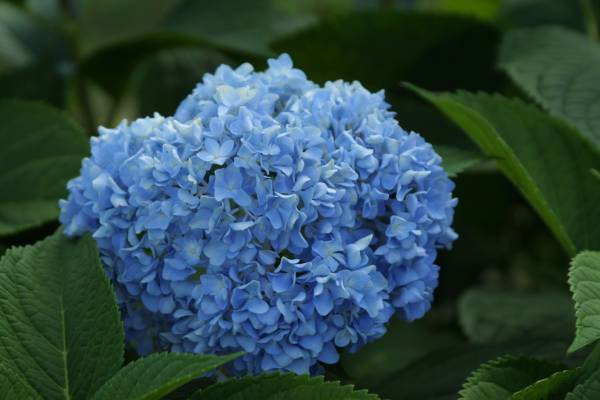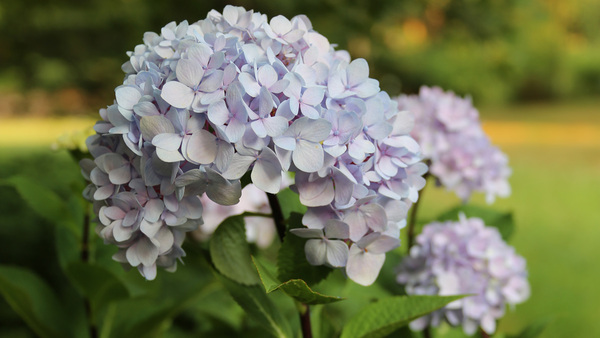
Photo/Illustration: Michelle Gervais

Photo/Illustration: Jennifer Benner

Photo/Illustration: Michelle Gervais

Photo/Illustration: Jennifer Benner
Why does the pH of my soil change the color of my hydrangea blossoms? Will it affect my other flowers?
–Virginia C. Wilch, East Setauket, New York
 |
||
|
|
The flowers of bigleaf hydrangeas (Hydrangea macrophylla cvs., USDA Hardiness Zones 6–9) are blue in very acidic soil and pink in slightly acidic soil. The color comes from anthocyanins, which are water-soluble pigments within plant cells that appear blue when stacked close together and pink when farther apart.
The effect of soil acidity on blossom colors is actually indirect. Aluminum is responsible for changing the hues of hydrangeas, allowing anthocyanin molecules to move closer together, resulting in blue coloration. It becomes more soluble in acidic soil and, therefore, is more readily absorbed by plants.
Soil acidity and the resulting aluminum uptake could also affect the pink-to-blue color change with other flowers. Some flowers, such as wild morning glories, are pink when they initially unfold and then turn blue. Why? No one knows-yet. But aluminum is toxic to plants, and death usually results at levels needed to effect that color change. Even hydrangeas are not immune to aluminum toxicity, so keep tabs on soil acidity. To maintain blue hydrangeas, a pH of 5.0 to 5.5 is ideal.
When soils are naturally alkaline or slightly acidic, use sulfur or aluminum sulfate to turn bigleaf hydrangea flowers blue. Sulfur acidifies soils, increasing the uptake of aluminum that is naturally present in most soils; aluminum sulfate acidifies soils and adds aluminum. You can also increase aluminum uptake by using acidic peat and acid-forming fertilizers, such as ammonium sulfate. Avoid fertilizers high in phosphorus, which form insoluble aluminum compounds.
If you want pink hydrangeas but your soil is naturally very acidic, add limestone to increase alkalinity. The ideal pH range is 6.5 to 7.0. For a longer-lasting effect, dig limestone into the soil at planting time.
Flowers, of course, have their inherent colors. This genetically programmed color is affected by acidity within plant cells, which is unrelated to the acidity of the soil. So changing your soil’s pH won’t help in altering the appearance of most flowers.
-Lee Reich, author of Grow Fruit Naturally, is a soil scientist who gardens in New Paltz, New York.


















Comments
Hello my dear
My name is Joy I am a girl single and never married, please contact me
back in my e-mail address [email protected] and I will give you my picture and further details thanks.
Good explanation of what affects the color of hydrangea flowers. Does acidity affect all hydrangeas or only certain varieties?
Hank
Douglassville, PA
Hydrangea paniculata, Hydrangea quercifolia, Hydrangea arborescens are not affected. I think it is mostly just most cultivars of Hydrangea macrophylla. A few Hydrangea macrophlla are non-bluing. They are affected by ph, but their colors range from bright pink to a dull reddish purple.
My Hydrangea serrata 'blue billow' seems to have a little variation in color. I don't know the deal with that species.
I looked it up. Hydrangea serrata is affected by ph.
Log in or create an account to post a comment.
Sign up Log in